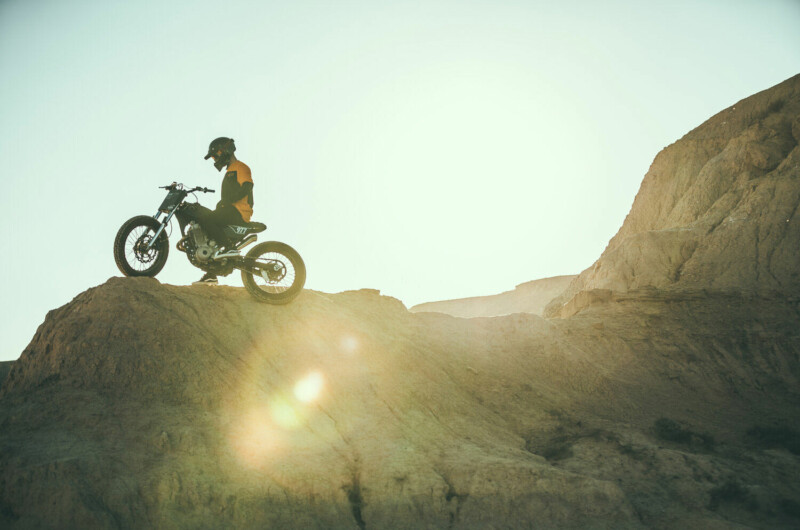Accessories
Shoei visor tints
Especially with helmets without a built-in sun visor, the different tints allow an effective protection against too much sun exposure. The „Photochromatic“ visor, which adjusts its tint according to the light conditions, can be specified here and thus becomes a true all-rounder.
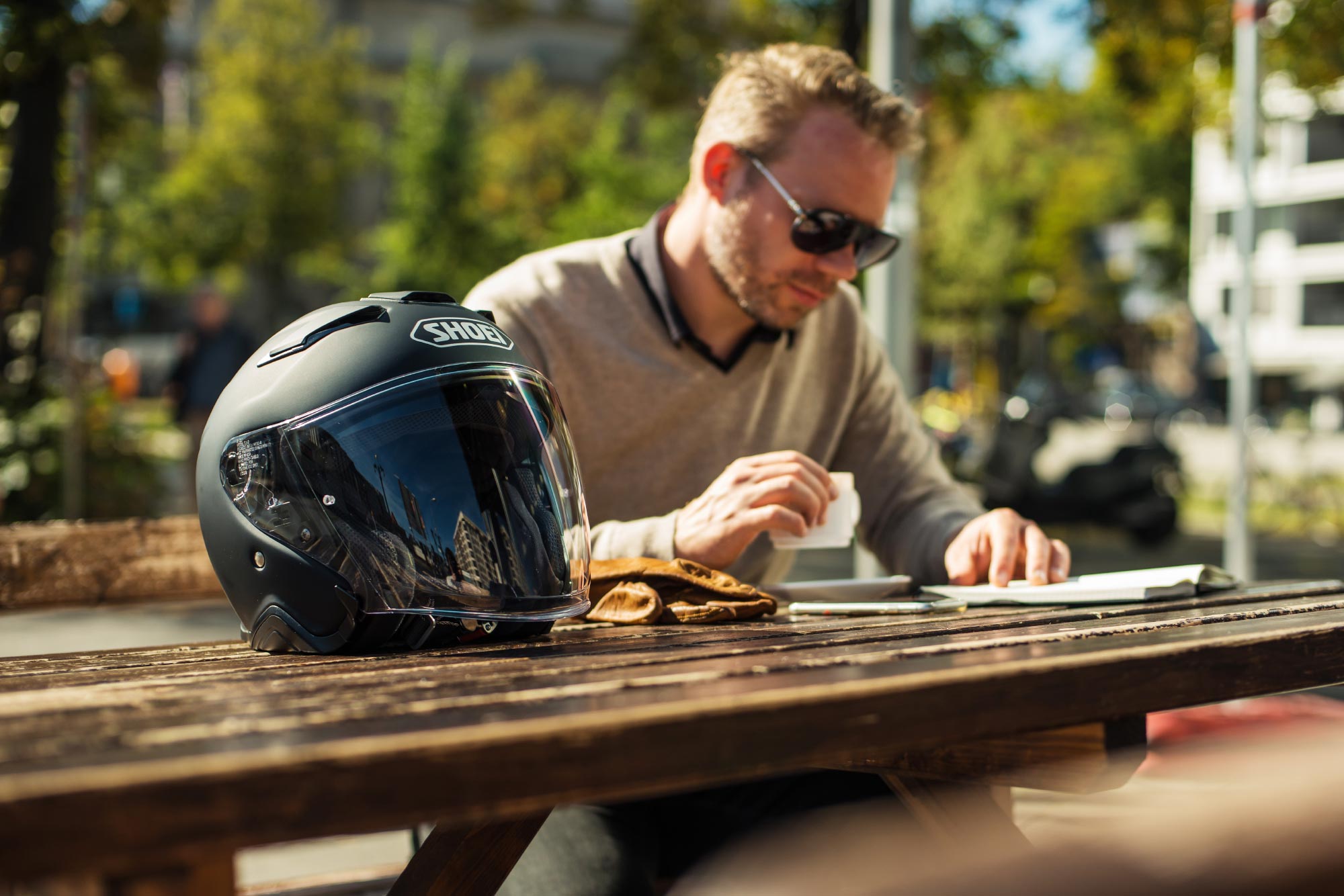
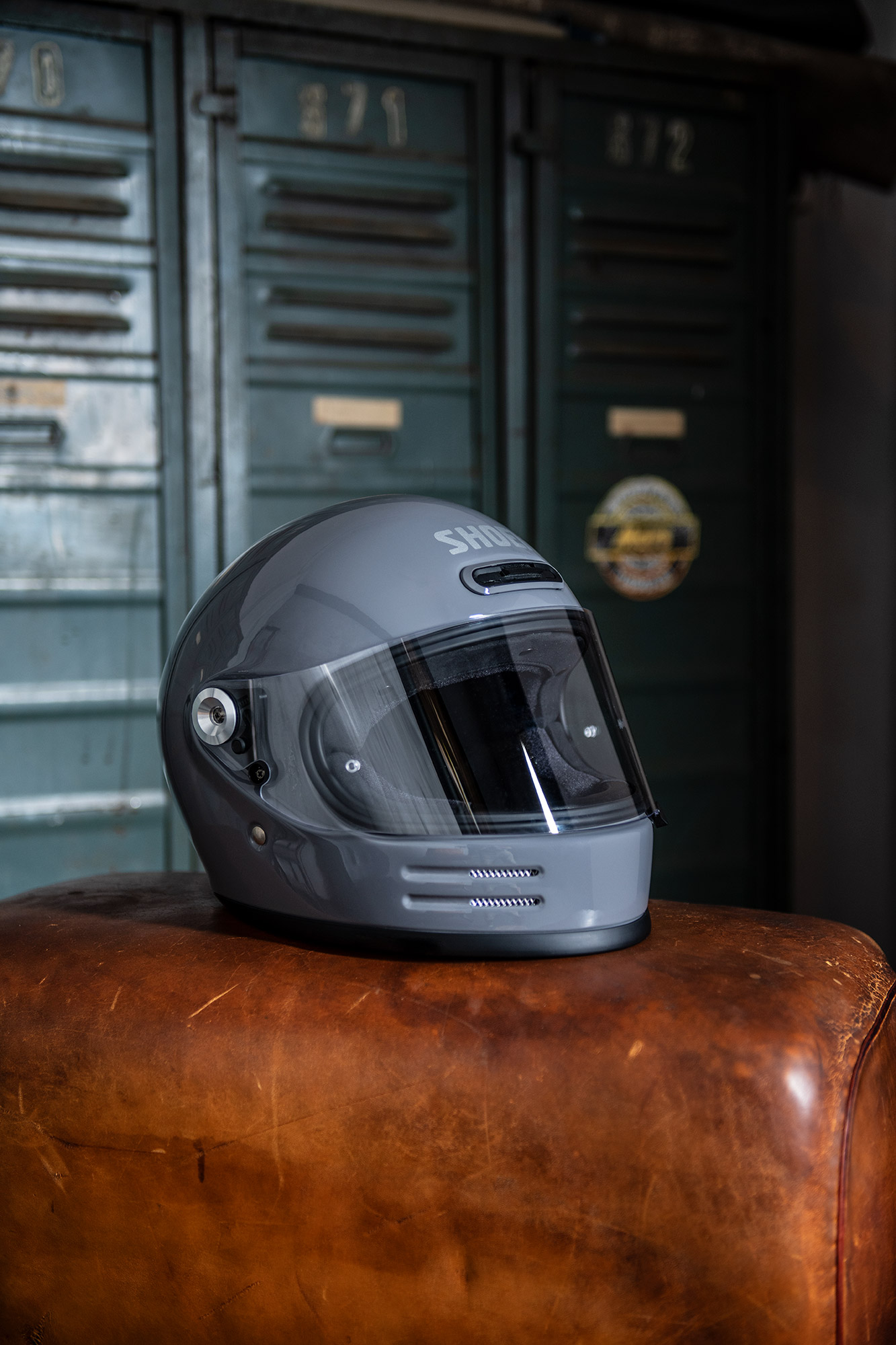
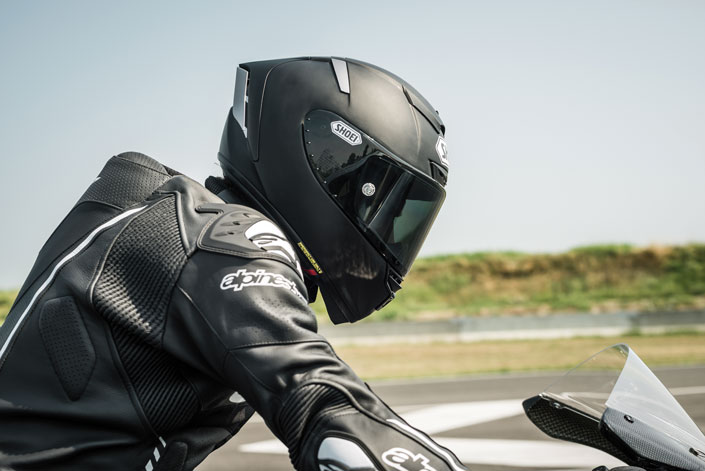
Visortint:
Clear
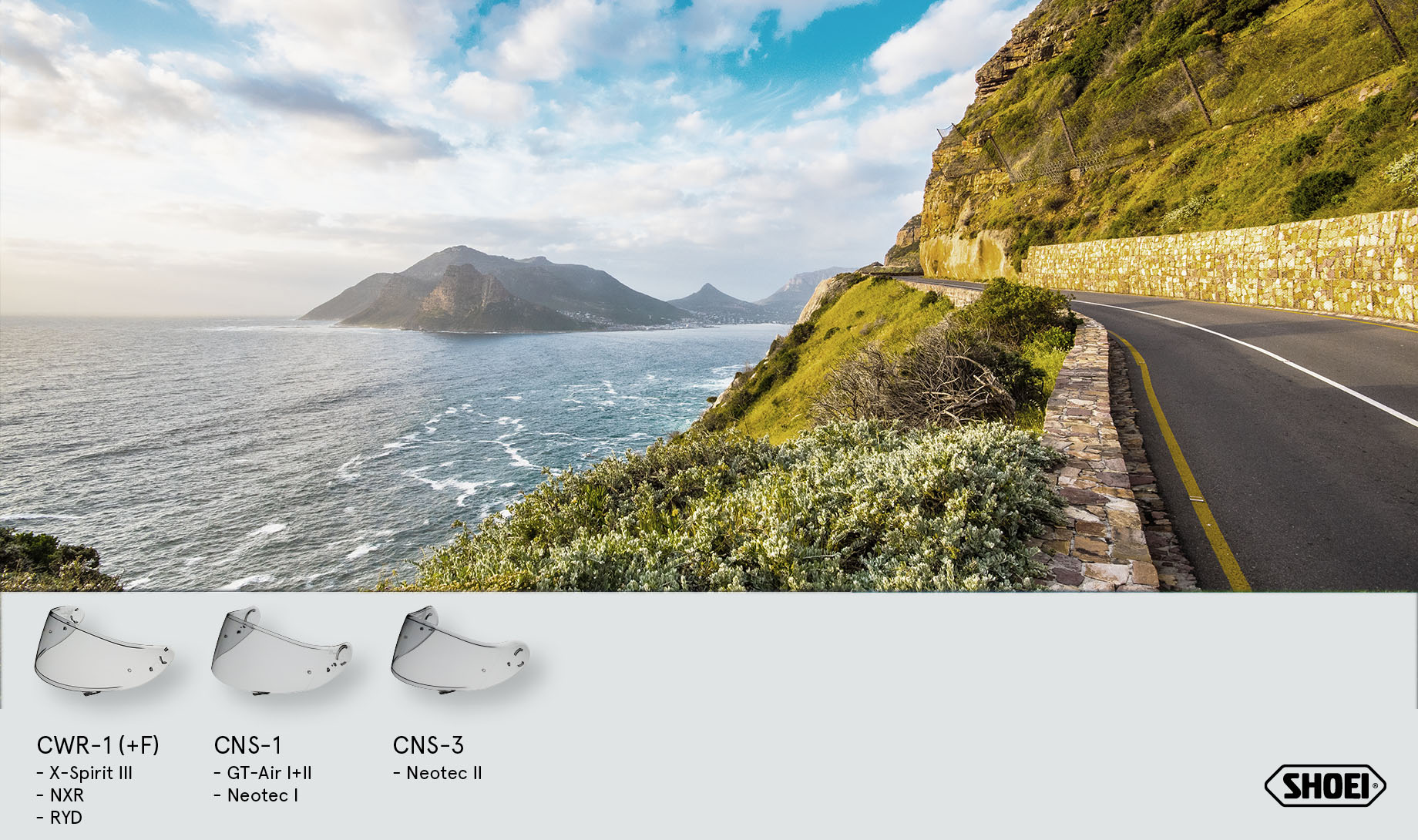
Each SHOEI helmet comes with the clear visor as the standard version. It fulfills all criteria of the ECE R22 / 05 homologation and shows the environment completely color neutral and distortion-free. As with all visors (except CJ-3 for the J•O and EX-Zero models), there are brackets for an additional anti-fog pinlock system. Unlike the CWR-1, the racing version CWR-F is not vertically curved to allow the use of tear-offs.
Clear
Pinlock: Yes
Standard ECE R 22/05: Yes
Light transmission: min 85%
Usage: Day / Night (without Pinlock)
Visortint:
Medium smoke
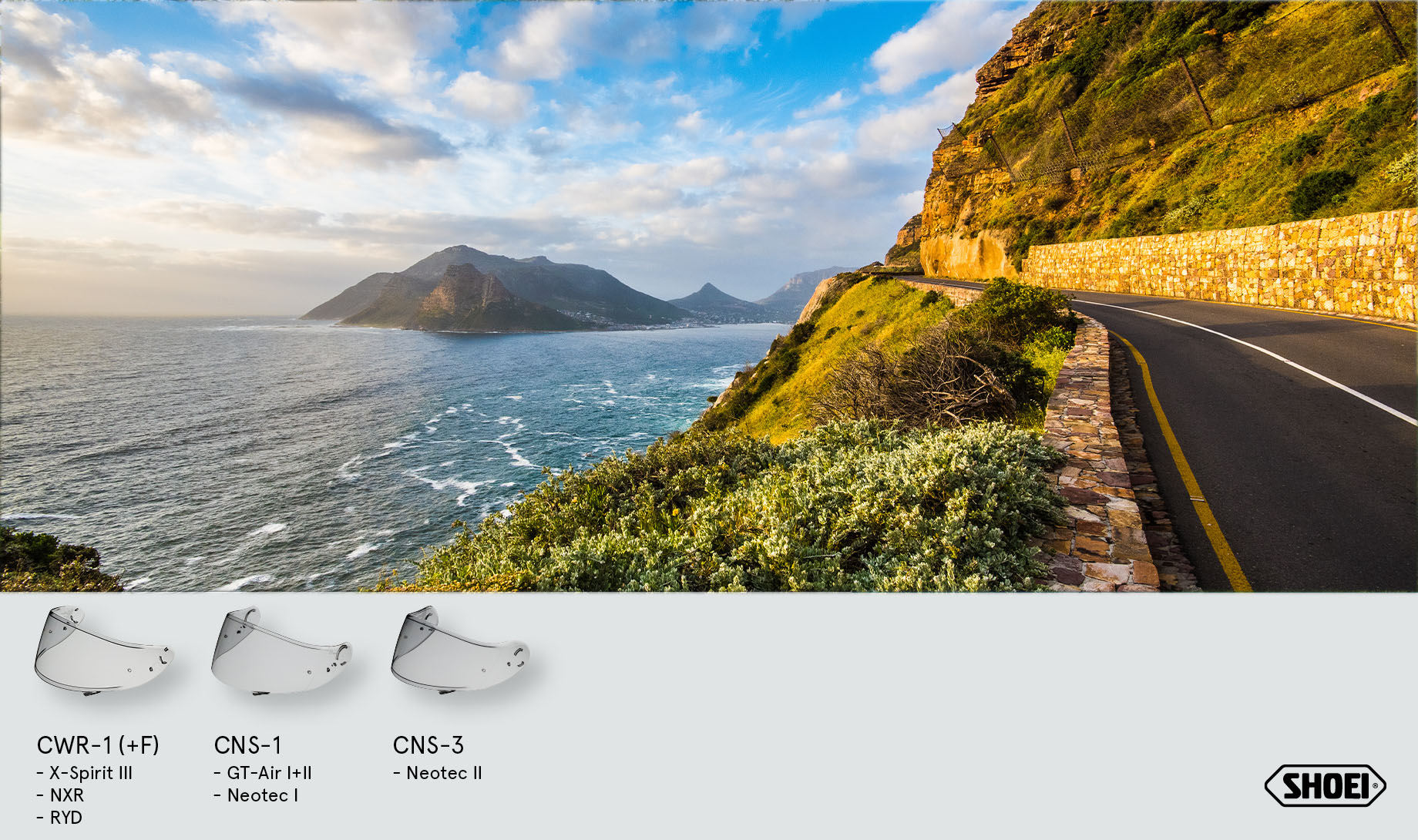
The slightly tinted visor (Medium Smoked) is relatively inconspicuous but very pleasant to ride. It is only slightly colder (gray-blue) than the neutral impression with the clear visor. Even in bad weather up to dusk, this visor still offers a very good view. In the dark, however, it can not be driven according to the ECE standard, as it is – even if low – tinted. Unlike the CWR-1, the racing version CWR-F is not vertically curved to allow the use of tear-offs.
Medium smoke
Pinlock: Yes
Standard ECE R 22/05: Just CWR-1 and CNS-1
Light transmission: min 56-62%
Usage: Day (sunny up to changeable weather)
Visortint:
Dark smoke
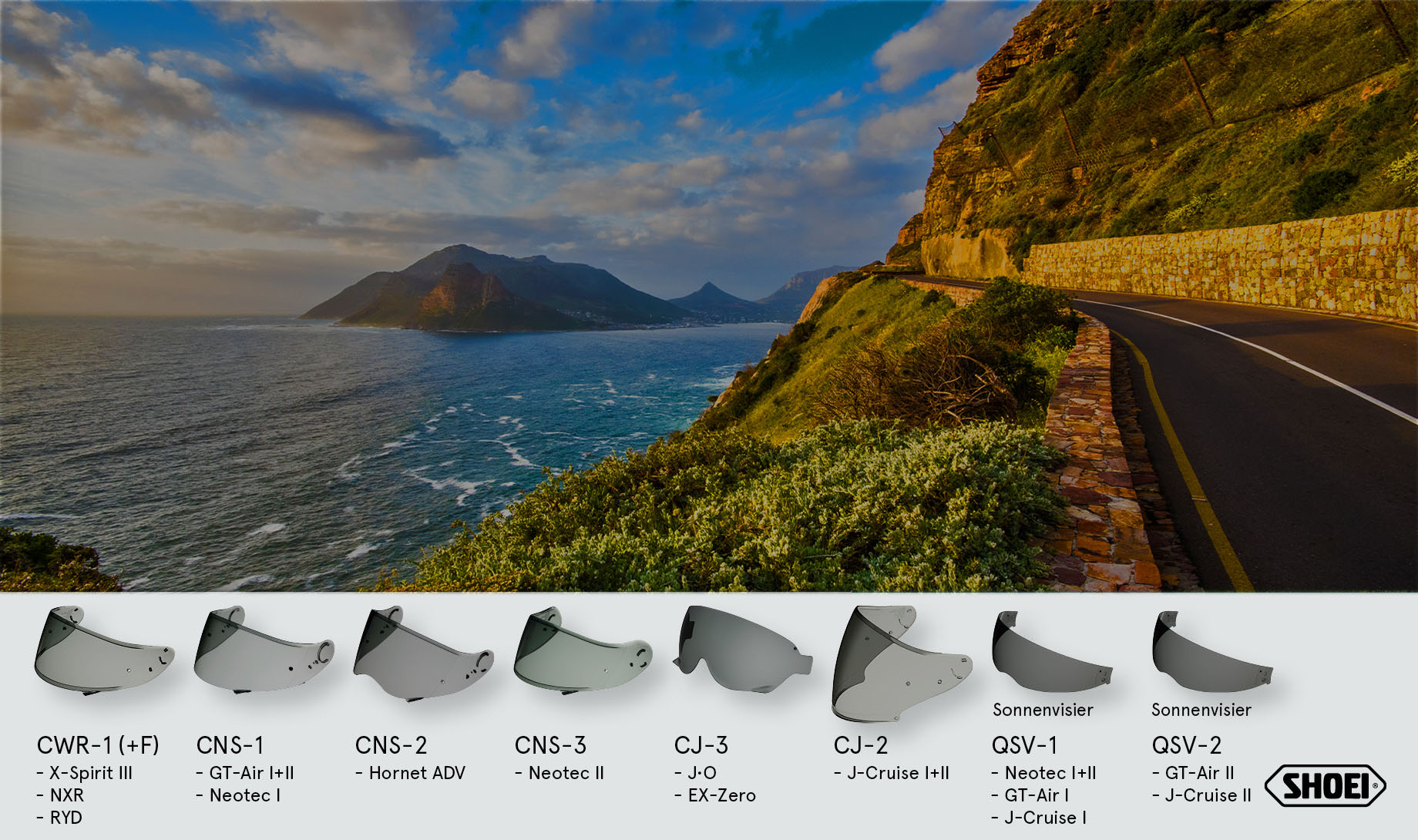
This visor is used especially in very good weather and correspondingly strong sunlight. Above all, extremely bright parts are displayed darker very effectively. However, dark and shady areas also appear strongly toned. In color the impression is more green, if only slightly. Unlike the CWR-1, the racing version CWR-F is not vertically curved to allow the use of tear-offs.
Dark smoke
Pinlock: Yes
Standard ECE R 22/05: No
Light transmission: 24-30%
Usage: Day (very sunny)
Visortint:
selftinting
(photochromic)
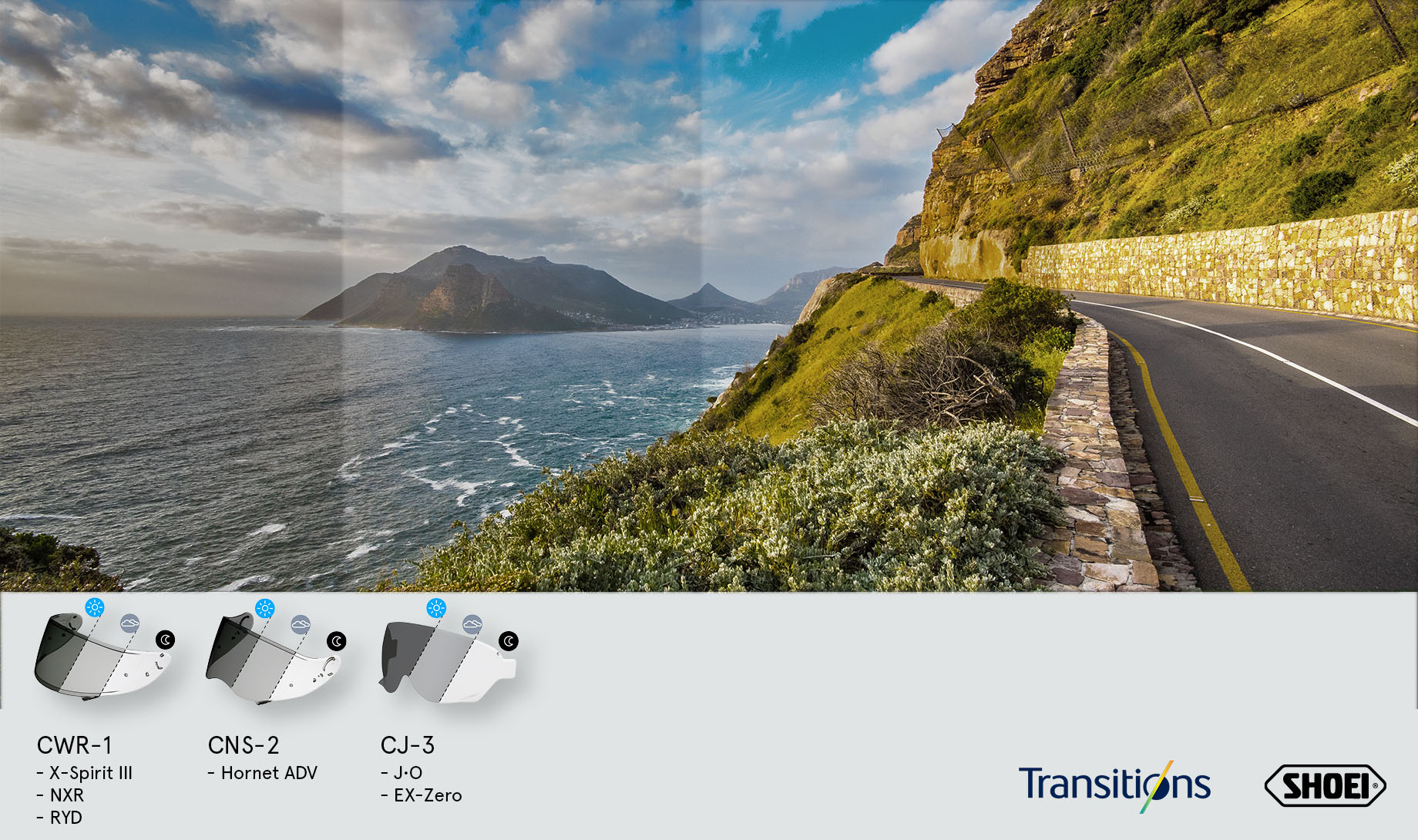
The allrounder under the visors! Depending on the brightness, this visor darkens automatically due to its light-sensitive coating. This process – from completely clear to the maximum tint – takes about 30-40 seconds. If the sun seems very strong, it darkens even as strongly as the „Dark Smoked“. If the sun decreases, the „Photochromatic“ also goes along with it and reduces the tint – even to bad weather or dusk, where it becomes really clear. The color impression is more reddish, particularly with strong tint, and will become more and more neutral with decrease of this.
selftinting
Pinlock: Yes
Standard ECE R 22/05: No
Light transmission: 80-30%
Usage: Day (sunny up to changeable weather)
Visortint:
Spectra silver
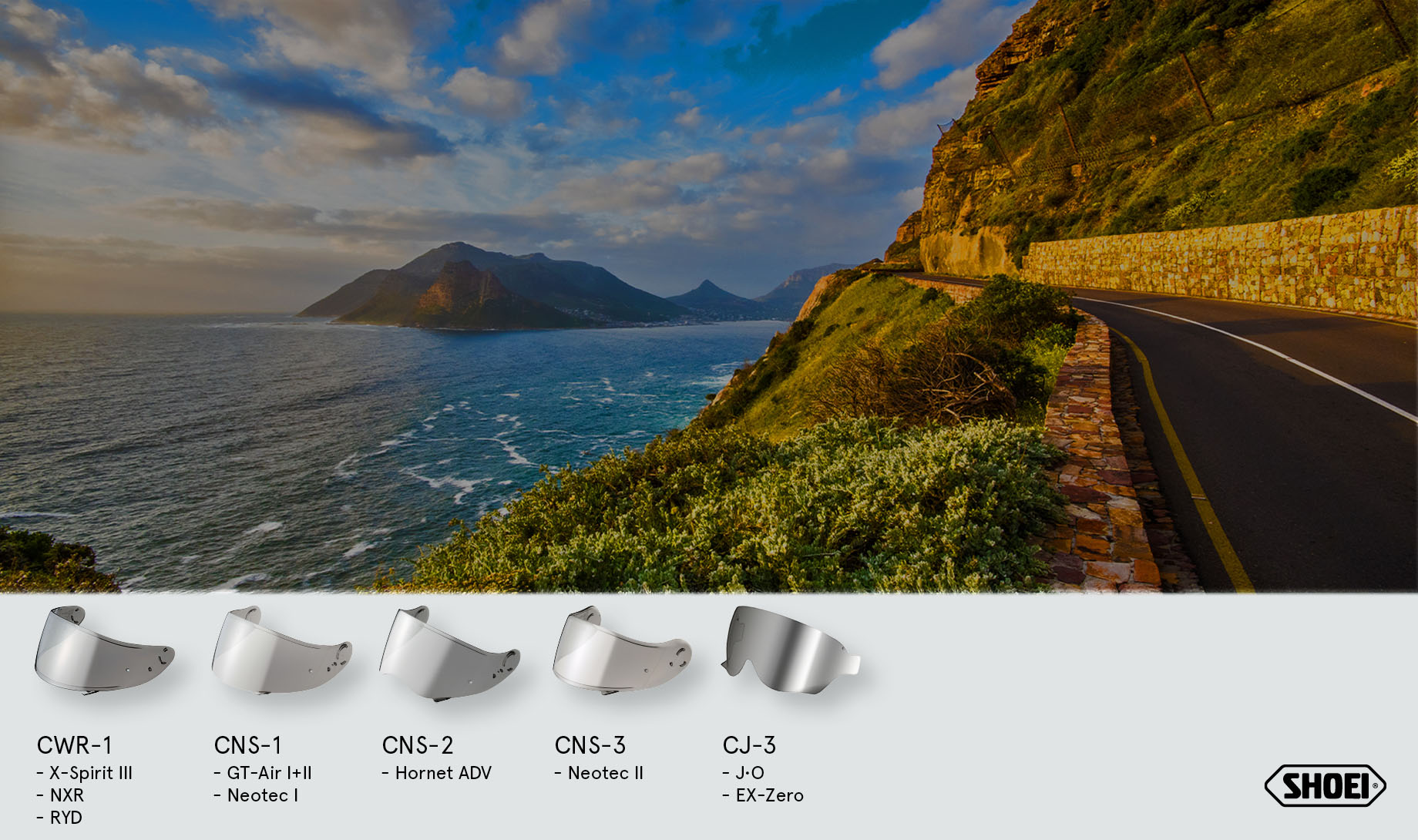
It darkens slightly less than the „Dark Smoked“. The color tone is relatively neutral with a slightly reddish touch. Especially in very sunny weather, this impression is somewhat similar to the „Photochromatic“. But even in overcast skies, the slightly reddish color impression comes close to the chromatic.
Spectra silver
Pinlock: Yes
Standard ECE R 22/05: No
Light transmission: 24-30%
Usage: Day (very sunny)
Visortint:
Spectra blue
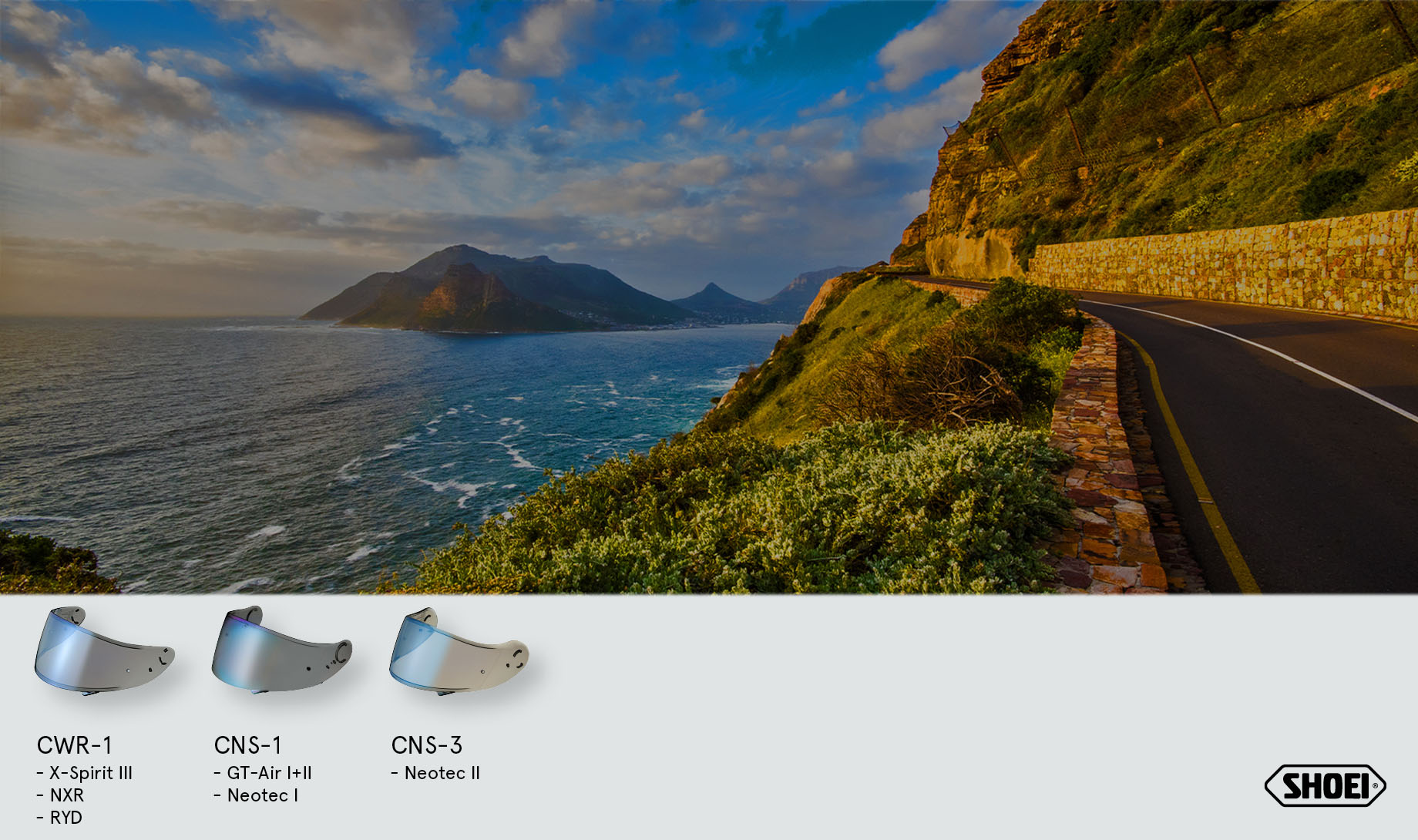
The „Spectra Blue“ impression is even warmer / redder than at the silver one. If you are looking for warmer colors, check out this visor. At least during the day and there in sunny weather, a very different contrast is created between the impression of the outside and the inside.
Spectra blue
Pinlock: Yes
Standard ECE R 22/05: No
Light transmission: 24-30%
Usage: Day (very sunny)
Visortint:
Spectra gold
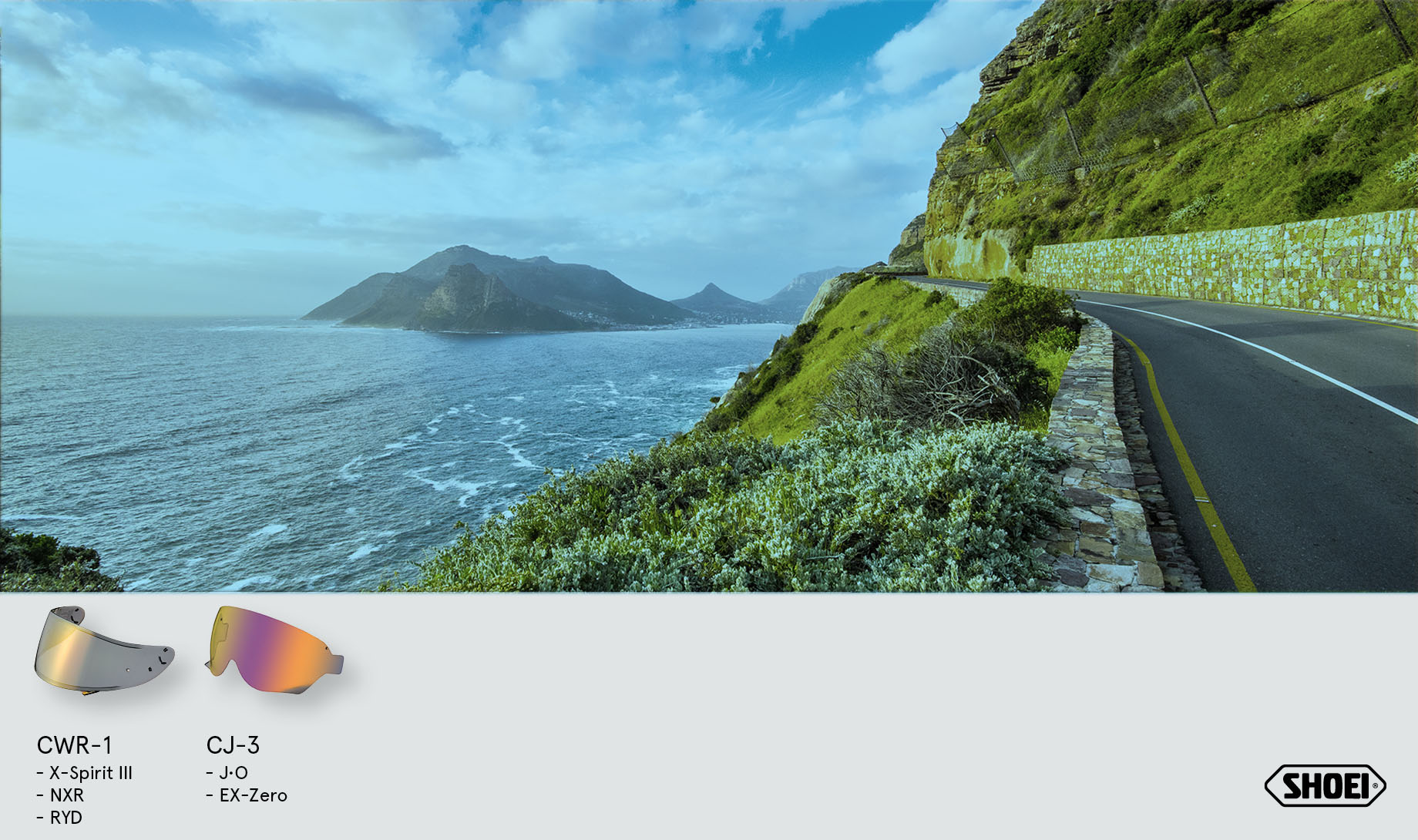
The „Spectra Gold“ visor darkens more strongly than the silver- or blue-mirrored one. So it corresponds rather to the „Dark Smoke“. In contrast to this, however, the color when looking trough is rather slightly bluish and also thus very different from the rather warm impression from the outside.
Spectra gold
Pinlock: Yes
Standard ECE R 22/05: No
Light transmission: 24-30%
Usage: Day (very sunny)
Visortint
Spectra rainbow
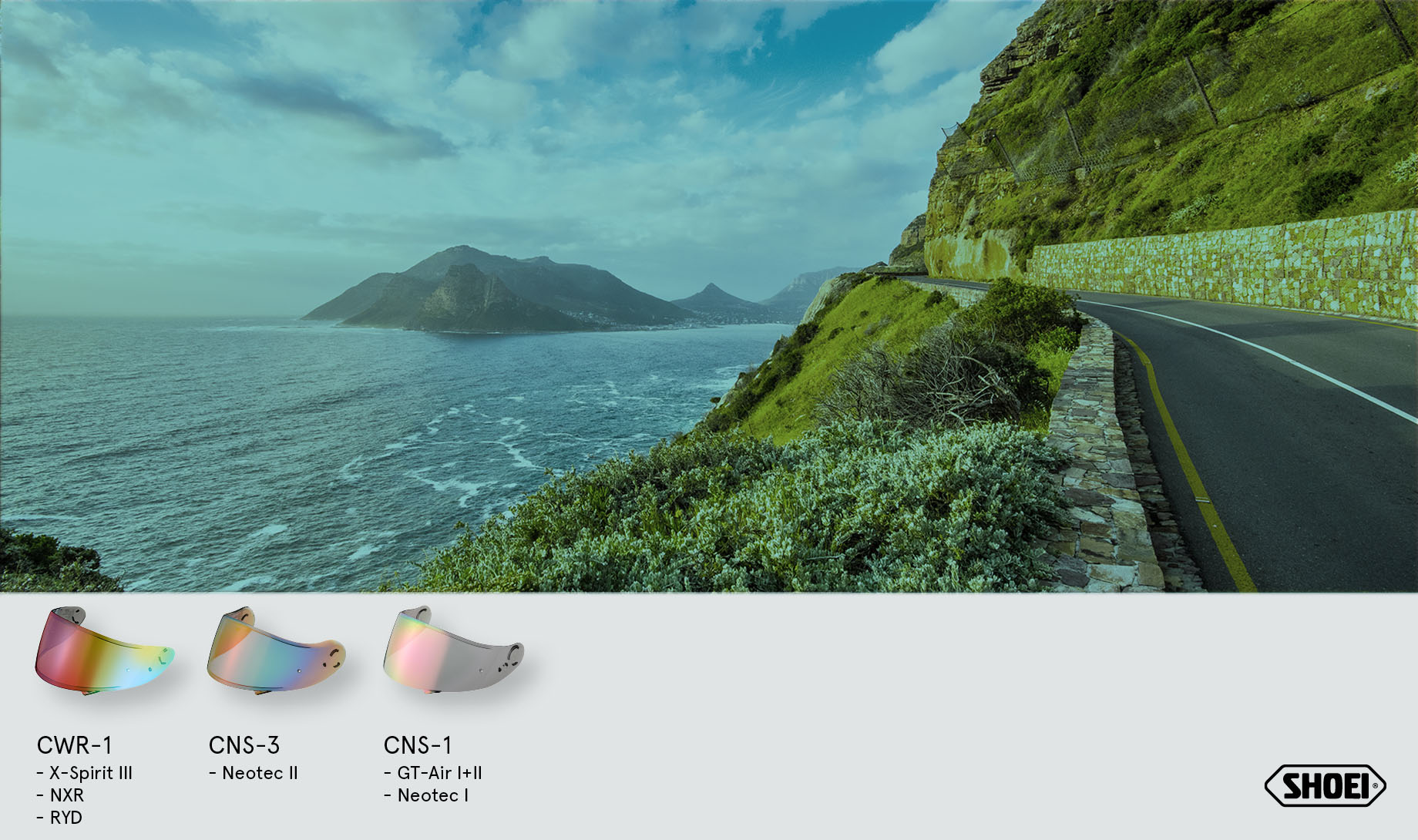
Here the inside view is almost the same as at the „Spectra Gold“. However, the visual impression is rather bluish-greenish and is therefore slightly warmer than with the pure golden visor. If it is very bright outside, the tint is slightly brighter than the „Spectra Silver“.
Spectra rainbow
Pinlock: Yes
Standard ECE R 22/05: No
Light transmission: : 24-30%
Usage: Day (very sunny)
Visortint:
Yellow (high definition)
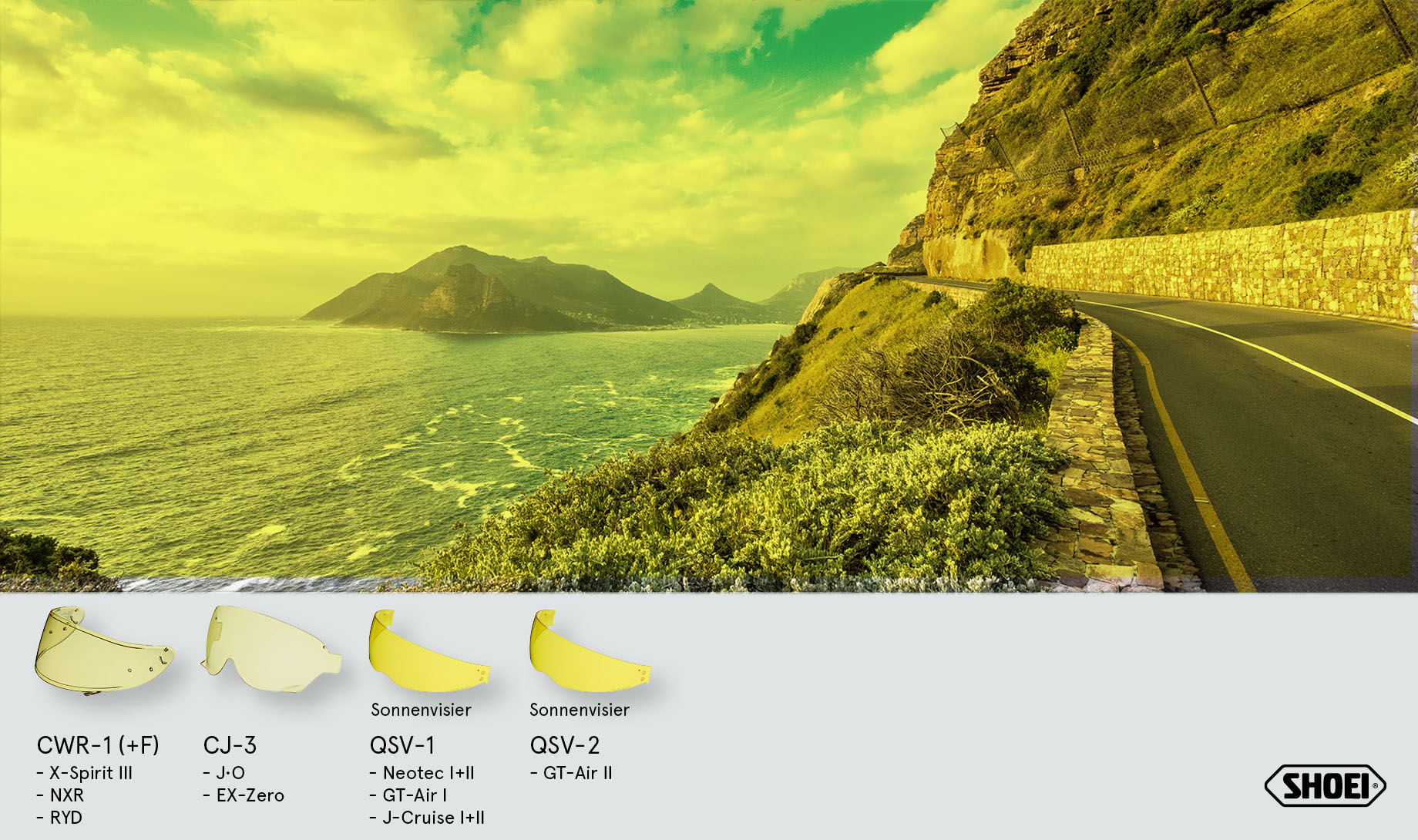
The yellow HD visor has a slightly contrast-enhancing effect, especially when the weather is bad or rainy and has been developed for the race track. In fact, you have the impression that all dark parts are lightened somewhat and by the way the weather appears more sunny and better than it actually is. A dark tint is really not to be observed in any weather situation. However, this visor can not be driven at night, according to ECE R 22/05 standard. The yellowish sight is a matter of taste, whereby the eyes become very accustomed with time. Unlike the CWR-1, the racing version CWR-F is not vertically curved to allow the use of tear-offs.
yellow (high definition)
Pinlock: Yes (not for CJ-3)
Standard ECE R 22/05: No
Light transmission: 85%
Usage: Day, bad weather (contrast enhancing)
Information and care instructions:
ECE helmet standard
The currently valid ECE R 22/05 helmet standard requires a light transmission of at least 80% for visors, so it can be used around the clock without any problems. Visors with a lower light transmission of 50-80% receive the addition „For daytime use only“, so are only suitable for use during the day.
Cleaning
As with the helmet, lukewarm water with some liquid soap should be used for cleaning the visor. The concentration of the soap should not be too strong as it could collect under the plastic parts and damage it.
Visor cleaner
There are special visor cleaners that are often used to clean the entire helmet. Again, you should not use too much of it to avoid damage to the rubber and plastic parts.
Drying
In order to subsequently dry the visor and avoid unwanted streaks, a lint-free, fine microfiber cloth should be used for this purpose.
Scratches
In no case should the visor ‚fast and easy‘ be wiped with the motorcycle glove or other unsuitable or dirty objects! This can lead to scratches especially in the case of coated visors. If a visor has strong scratches, it is recommended to replace it. On the one hand, the aging process is accelerated with scratched visors; on the other hand, scratches also present a safety risk precisely in the field of view. Especially mirrored visors („Spectra“) can scratch with careless treatment and thus create unwanted glare.
Softener
Visors contain so-called softener, which evaporate over the years, which is intensified by frequent use and UV light. As a result, the visor loses its flexibility and, in the event of an accident, it can even collapse and cause severe cuts in the face.
Exchange
The visor should be replaced after five years at the latest. For example you can find the production date of the SHOEI visors on the left side of the visor with a four-digit number string (month, year).
